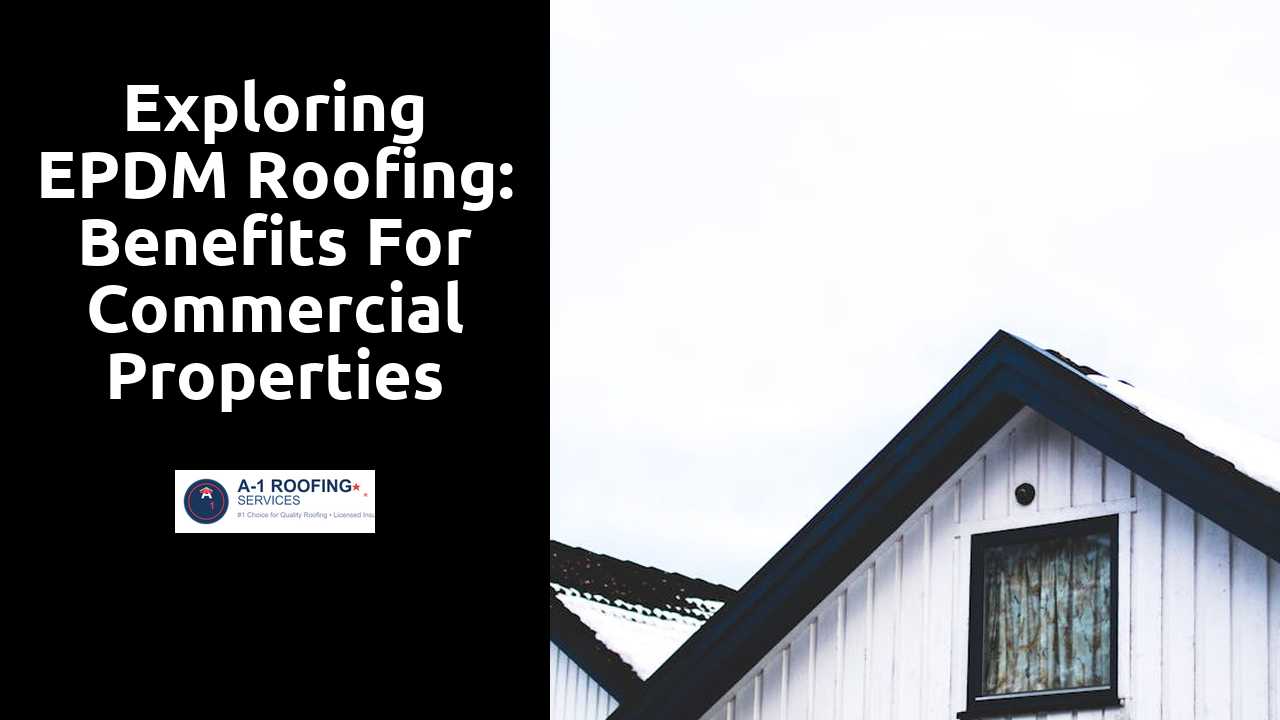
Exploring EPDM Roofing: Benefits for Commercial Properties
Table Of Contents
Installation Process
The installation of EPDM roofing begins with a thorough preparation of the roof surface. This includes cleaning to remove any debris, dirt, or contaminants that could affect adhesion. Any existing roofing materials that are damaged may need to be repaired or removed. Once the surface is ready, a primer is often applied to enhance the bond between the roof and the EPDM membrane.
The next step involves laying out the EPDM membrane. It is important to ensure that it fits properly over the roof area. The membrane can be fully adhered, mechanically fastened, or ballasted, depending on the specific roofing requirements. After positioning the membrane, seams must be sealed to prevent leaks. Proper sealing is critical to the longevity and effectiveness of the roof. Air bubbles should also be checked and removed during this process to avoid any future complications.
Navigate to these guys for detailed information.
Key Steps in EPDM Installation
The installation of EPDM roofing begins with a thorough inspection of the roof deck. It’s crucial to ensure that the surface is clean, dry, and free of debris. Any imperfections or rough spots should be addressed to provide a suitable base for the membrane. Once the deck is prepared, the next step involves measuring and cutting the EPDM sheets to the appropriate size. Careful handling of the rubber is essential to avoid tears or damage during the process.
After cutting the sheets, the installation proceeds with applying adhesive to the roof surface. It's important to follow the manufacturer's guidelines precisely for proper adhesion. The EPDM sheets are then laid down, ensuring that seams are overlapped as specified. Depending on the roofing system, additional measures such as ballasting or mechanical fastening may be employed to secure the membrane. Proper attention at each stage ensures a durable and effective roofing solution.
Maintenance Requirements
Regular maintenance is essential for extending the lifespan of EPDM roofing systems. Inspect the roof at least twice a year and after any significant weather events. Look for signs of wear, such as cracks, bubbling, or tears. Keeping the surface clean will also prevent debris buildup, which can lead to water pooling and potential damage. Removing leaves and other materials promptly can help maintain proper drainage and enhance the roof's performance.
Addressing small repairs immediately can prevent larger issues from developing. For minor punctures or cuts, specialized repair kits are widely available and can help restore the integrity of the roofing material. Depending on the specific installation, a thorough wash with a non-abrasive cleaner may be recommended to remove dirt and grime. This helps preserve the roof's flexibility and overall durability. Regular inspections and proactive care can greatly contribute to the efficient operation of EPDM roofing over time.
Routine Care for Longevity
Regular inspections of EPDM roofing can significantly extend its lifespan. Property owners should conduct visual assessments at least twice a year, checking for any signs of damage such as punctures, tears, or lifted seams. Addressing minor issues promptly helps prevent larger problems that could lead to costly repairs. Additionally, cleaning the surface to remove debris and prevent mold growth is essential, as accumulated dirt can degrade the rubber over time.
Applying a protective coating can also enhance the durability of an EPDM roof. These coatings provide an extra layer of defense against UV rays and extreme weather conditions. It is advisable to reapply this coating every few years. Routine checks for drainage system functionality are crucial as well. Ensuring that gutters and downspouts are free of obstructions allows for proper water flow and reduces the risk of pooling, which can further compromise the roofing material.
Comparison with Other Roofing Materials
When evaluating different types of roofing materials, EPDM stands out for its affordability and durability. Compared to TPO, which offers less resilience in extreme weather conditions, EPDM is known for its ability to withstand UV exposure, extreme temperature fluctuations, and ozone damage. This resilience makes EPDM a long-term solution for commercial properties in various climates.
In contrast to PVC, which can be more expensive and installation-intensive, EPDM simplifies the installation process. The flexibility of EPDM allows for easy adaptation to complex roofing designs. While both materials provide reliable waterproofing, EPDM's performance under diverse conditions often makes it the preferred choice for many property owners looking for a robust roofing solution.
EPDM vs. TPO vs. PVC
When evaluating different roofing materials, each type has its distinctive advantages and potential challenges. EPDM, known for its durability and elasticity, is a popular choice among commercial property owners. It excels in resisting weather conditions and can withstand temperature fluctuations without losing its integrity. TPO, on the other hand, offers reflective properties that can enhance energy efficiency by reducing heat absorption. PVC is recognized for its robustness, particularly in environments prone to chemical exposure, making it a suitable option for certain industrial applications.
Cost is another important factor in the decision-making process. EPDM generally has a lower installation cost compared to TPO and PVC, appealing to budget-conscious projects. However, TPO has gained traction for its cost-effective energy-saving abilities. PVC, although typically more expensive due to its quality and performance, provides a long lifespan, often justifying the higher initial investment. Choosing among these materials will ultimately depend on specific property needs, climate considerations, and financial constraints.
Related Links
The Versatility of PVC Roofing Systems for Business EnvironmentsUnderstanding TPO Roofing Systems for Commercial Applications